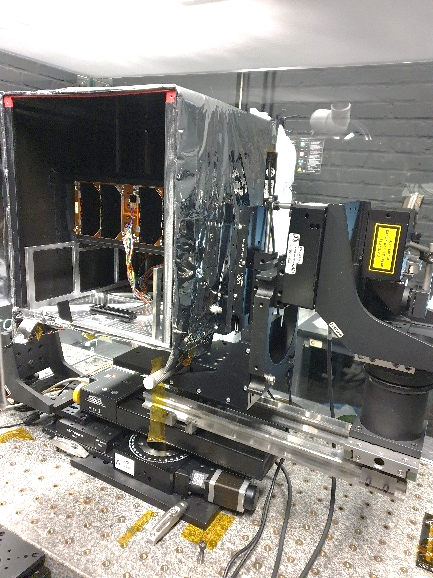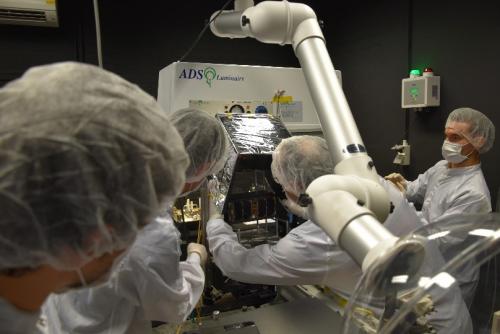The INSPIRE-SAT 7 satellite
The satellite is developed under the scientific responsibility of the Laboratoire Atmosphères & Observations spatiales (LATMOS, France).
It is composed of:
- 10 sensors for the measurement of the solar constant
- 12 Earth Radiative Sensors (ERS) for the measurement of the Earth radiative emission
- 4 UV sensors of new technology, designed to monitor the intensity and the variability of the Sun irradiance in the ultraviolet.
These sensors must be characterised prior to the flight to ensure optimal processing of the space measurements.
The primary role of BIRA-IASB, with the support of BELSPO and the PRODEX Office (ESA), has been to use the Belgian Radiometric Characterization Laboratory (B.RCLab) integrated in BIRA-IASB for the radiometric characterisation and absolute calibration of these sensors. After launch (April 2023), the laboratory will be involved in the commissioning phase to verify the in-orbit responsivity and process the first scientific data.
The calibration unit
The electro-optical characterisation bench developed by the B.RCLab is essentially composed of a motorized mount on which the satellite is integrated, as well as radiometry equipment (stable light sources, double monochromator, calibrated photodiodes, etc.), as illustrated in the figure behind the link.
The mount helped to accurately align the satellite sensors in translation and rotation according to the required radiometric characterisations. The mount is controlled remotely by an Optical Ground Segment Equipment (OGSE), which also ensures the safety of the satellite.
The characterisation campaign
The INSPIRE-SAT 7 satellite was characterised in the fall of 2022 at B.RCLab. This nominal campaign investigated the performances of the 'flight model' sensors, namely their spectral response functions, their angular responses, and performed their absolute calibrations.
A new test campaign is scheduled in 2023 for individual spare sensors to deepen these results. A thermal characterisation under vacuum of the sensors will be scheduled in order to study the possible variations of the sensor’s responsivity as a function of the temperature, under simulated space vacuum conditions.



